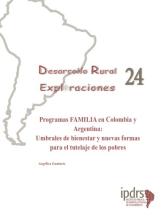Land Library
Welcome to the Land Portal Library. Explore our vast collection of open-access resources (over 74,000) including reports, journal articles, research papers, peer-reviewed publications, legal documents, videos and much more.
/ library resources
Showing items 1 through 9 of 110.This paper focuses on the application of the concept of Integrated Water Resources Management (IWRM) in Tanzania.
Semi-nomadic pastoralism was replaced by sedentary pastoralism in Inner Mongolia during the 1960's in response to changes in land use policy and increasing human population.
Among the world’s continents, Africa has the highest incidence of food insecurity and poverty and the highest rates of population growth. Yet Africa also has the most arable land, the lowest crop yields, and by far the most plentiful land resources relative to energy demand.
Dryland areas cover about 41 % of the Earth’s surface and sustain over 2 billion inhabitants. Soil carbon (C) in dryland areas is of crucial importance to maintain soil quality and productivity and a range of ecosystem services.
During the past century, humans converted extensive areas of tropical forest into cultivated lands. Three distinct processes, each predominant during a different historical period, have driven the destruction of the forests.
Primer premio de la categoría Ensayos del Concurso 2015, el trabajo que ahora presentamos se basa en la investigación Construcción de ciudadanía a través de políticas contra la exclusión social: el caso de “Familias en acción” y “Familias por la inclusión social” en los Conurbanos de Bogotá y Bue
This paper presents a case study of land-use/land-cover (LULC) changes from 1975 to 2014 in the central highlands of Ethiopia and traces out its impact on socioeconomic conditions of the local community in the study area.



